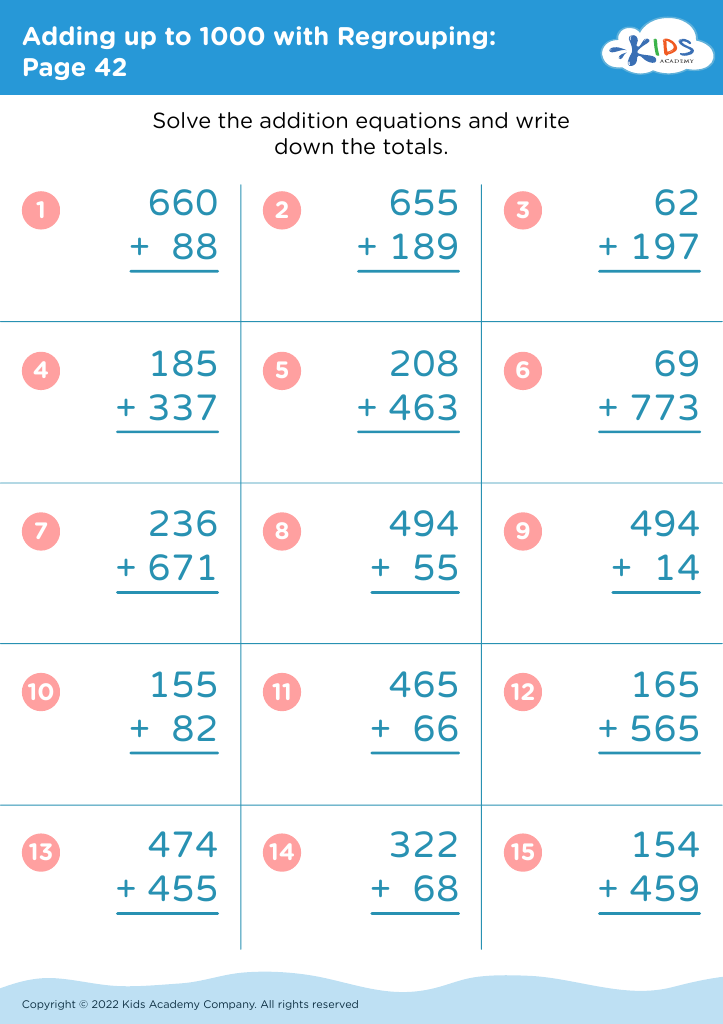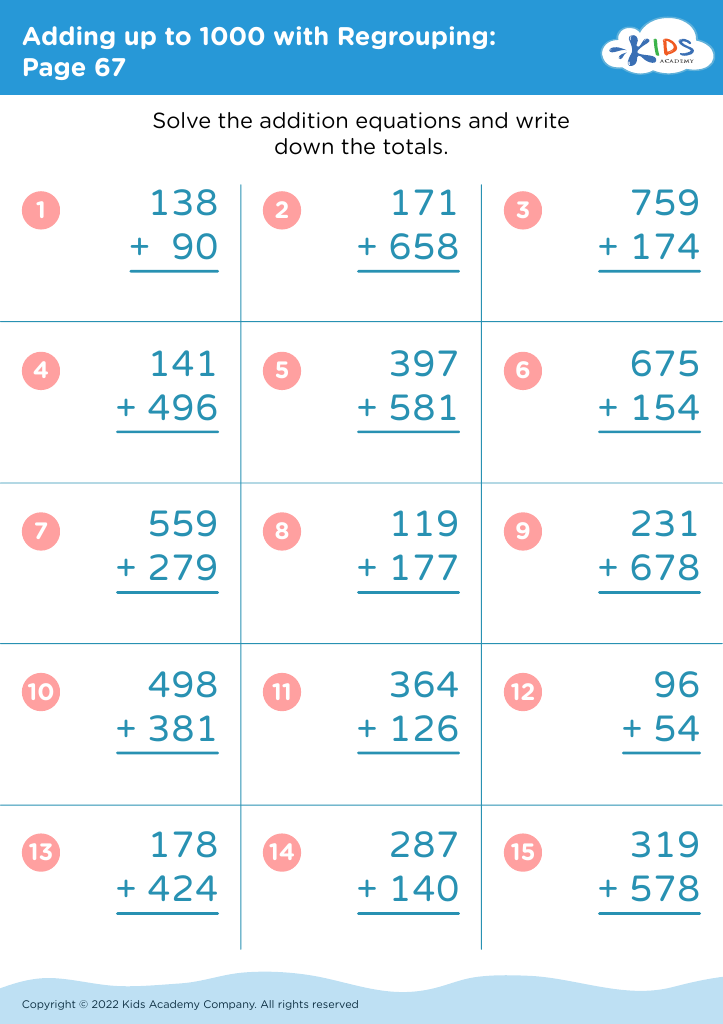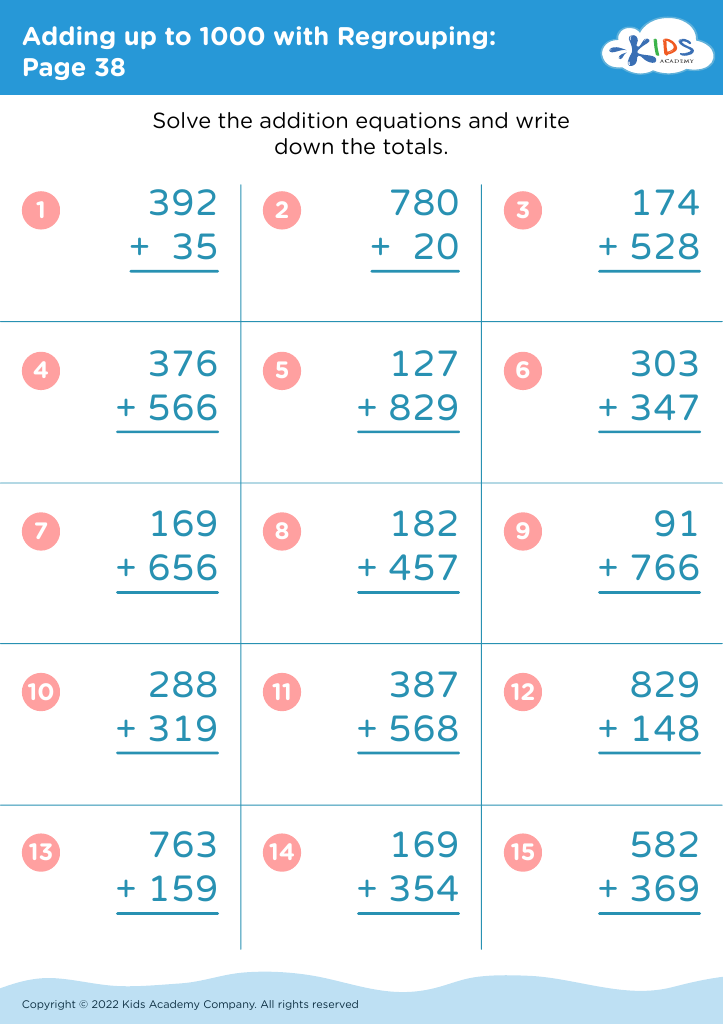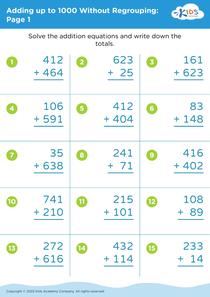Recognizing shapes Adding up to 1000 with Regrouping Worksheets for Ages 4-9
4 filtered results
-
From - To
Explore our engaging "Recognizing Shapes and Adding Up to 1000 with Regrouping Worksheets" designed specifically for children aged 4 to 9. These interactive resources facilitate the development of essential math skills while nurturing shape recognition. Children will enjoy hands-on activities that blend geometry with addition, helping them master adding larger numbers through effective regrouping techniques. Our worksheets encourage playful learning, allowing young learners to build confidence in math while exploring the world of shapes. Perfect for classrooms or homeschooling, these resources are tailored to foster creativity and analytical skills in young mathematicians. Discover the joy of learning with Kids Academy today!
Recognizing shapes and understanding the concept of adding up to 1000 with regrouping are foundational skills that significantly influence a child’s overall learning and development. For ages 4-9, these skills not only support mathematical understanding but also enhance cognitive abilities and spatial awareness.
When children learn to recognize shapes, they are developing critical observation skills that improve their ability to understand the world around them. Engaging with shapes fosters creativity, as it is often linked to art and design activities. Encouraging this at a young age nurtures problem-solving abilities and promotes logical reasoning.
On the other hand, mastering addition with regrouping lays the groundwork for more complex mathematical operations. It helps children understand place value and improve their numerical fluency. Grasping these concepts promotes analytical thinking and prepares them for advanced math skills in later grades.
By emphasizing these areas, parents and teachers contribute to a child's confidence in math, which correlates with academic success across subjects. Supporting these concepts makes learning enjoyable and interactive, encouraging a positive attitude toward mathematics. Therefore, recognizing shapes and regrouping are essential components of a solid educational foundation that benefit children throughout their educational journey.














